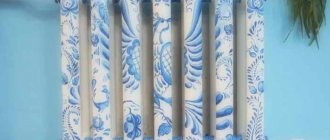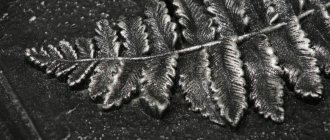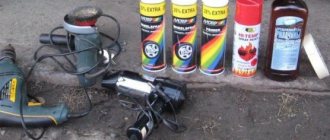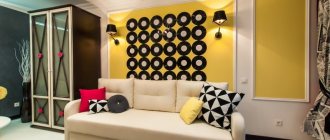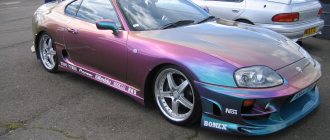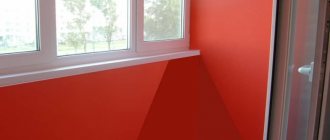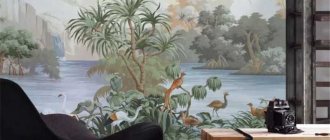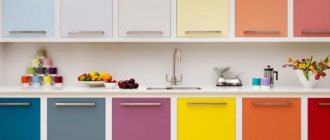Hair coloring: fashion trends
Before we talk about how to choose the right hair color, let's look at the main trends that colorists offer from season to season. Eternal classic!
- Dark colors
For those who are tired of various techniques for lightening strands (ombre, balayage, shatush, etc.), a coal-black shade without transitions or highlights is perfect. It is offered to be made with both a matte and a glossy finish (the latter option, of course, will have to be maintained with intensive care). Lovers of warm shades should opt for chestnut color and chocolate shades (milk, bitter, coffee).
- Bright hues
Potential blondes have a wide range of shades to choose from: platinum, honey, ash blonde. If you have naturally dark hair, be prepared for the fact that you are unlikely to be able to achieve the desired light tone from the first coloring. Typically, becoming a blonde occurs in several stages, so as not to spoil your hair.
- Red tones
The ideal modern redhead is not a bold red, but rather a golden chestnut. Choose more noble and calm shades. Red hair looks especially good with fair skin.
- Bright colors
How to choose a bright hair color? Let's look at the trends. Among bright colors, one of the favorites is blue. He is confidently winning social networks and our hearts. Fuchsia is also not losing its position, confidently migrating into this season from the past and becoming a more everyday occurrence.
- Multi-colored dyeing
The fashion for rainbow coloring in unicorn and mermaid styles is finally over. Lovers of colored hair should pay attention to the pastel blue shade - it is very trendy. But pastel pink was transformed into soft lilac vanilla lilac - a dyeing technique in which warm vanilla color from the roots gradually turns into lilac at the tips.
- Blonde strands
Stylists have always offered many ways to lighten strands. Over the last few seasons, blonde curls around the face have been at their peak. The color should differ by several tones, as if you had just returned from a sunny country. Lightened strands will refresh your face, add volume and diversify your hair color.
Natural dyes in confectionery products
Well, now let's talk about the most important thing: how to give a particular color to confectionery products using natural dyes.
Black color
Recently, black desserts inspired by Oreo cookies have been gaining popularity. So, to prepare a black sponge cake without the use of synthetic dyes, you can use bamboo charcoal powder (0.5 g per 100 g of sponge cake). To prevent the powder from scattering throughout the kitchen, add this dye along with the dry ingredients using a spatula.
Bamboo charcoal is also great for coloring creams, glazes and chocolate. It is universal.
In addition to this dye, black alkalized cocoa powder and the juice of ground black olives, strained through cheesecloth, will help you achieve a black color.
Brown color
It's no secret that to get a chocolate sponge cake, you just need to replace part of the flour from the recipe with cocoa powder. But not everyone knows that to achieve a rich brown color and rich chocolate taste, it is worth using alkalized cocoa powder. Alkalized cocoa differs from regular cocoa in that it is fattier, crumblier and richer. In general, try making a sponge cake with this cocoa, and you will never look at regular cocoa powder again.
You can also make glaze or chocolate cream based on alkalized cocoa powder.
Blue color
Red cabbage juice will help us get the blue dye. The juice must be boiled over medium heat until deep purple. To make it blue, just add 0.5 - 1 teaspoon of soda and stir thoroughly. This dye is liquid, so it is not suitable for every recipe. So, it can be introduced into biscuit dough, replacing part of the milk, or you can cook syrup for marshmallows based on it.
More versatile are matcha blue tea powder and blue spirulina. They can be used to color baked goods, chocolate, cream, etc.
Blue
To achieve a blue tint in finished products, you can use the same red cabbage juice, blue matcha and blue spirulina. All you need to do is reduce the amount of dye, thereby reducing its saturation.
Red color
The color red is most often associated with red velvet cake. If you've ever made this dessert, you probably know that to get a rich red color you need to add about 2-3 tsp. synthetic gel dye. Agree, this is quite a large number.
To prepare a more natural “Red Velvet”, you can use red fermented rice powder (1 gram per 100 grams of sponge cake). The color of the finished product will not be very bright, and will rather acquire a noble burgundy hue. This coloring should be added specifically to the dry ingredients.
A red color with a slight pinkish tint can be obtained using boiled cherry or black currant juice. Freeze-dried strawberry powder can also add a red tint to desserts. In addition to the red color, products with such dyes will acquire a pleasant berry taste.
The classic way to obtain red color is to boil beet juice. Grate the beets on a coarse grater, add water and simmer the whole thing over low heat under a lid for an hour. Then the broth is filtered through cheesecloth and a pinch of citric acid is added to it to enhance the color.
Black carrot powder is a universal natural dye. With it you can color dough, cream, mastic and even chocolate. It gives the products a noble burgundy color.
Orange color
What vegetable is associated with the color orange? Of course, carrots! It is with its help that you can give desserts an orange tint.
To get orange dye, we need carrots and butter in a 1:1 ratio. Grate the carrots and fry in oil. Then strain the oil through cheesecloth and voila: the orange dye is ready!
Turmeric and beta-carotene will also help you achieve an orange color in your confectionery. Just keep in mind that turmeric has a specific flavor, so add it a little at a time.
Green color
Green sponge cakes are also often found on Instagram. Most often, this biscuit is prepared using chopped spinach. Due to this, the dough turns out soft and tender.
To achieve a brighter shade, you can add mint powder, barley powder or matcha green tea to the biscuit dough (2 grams per 100 grams of biscuit). True, such dyes give desserts a light herbal taste. If you are not satisfied with this, you can add a little lime or lemon juice (+ their zest) to the dough. This will give the finished dessert an interesting citrus note and hide the plant flavor.
To color cream or chocolate, it is better to use matcha green tea (less intense) or dried barley juice.
To make it easier for you to remember the dyes, I offer you the following table
| Desired color | Products |
| Red | Red fermented rice powderBeet, cherry, currant, pomegranate juiceFreeze-dried strawberry powderBlack carrot powder |
| Orange, yellow | Carrot juice + butterTurmericBeta-carotene |
| Green | Spinach juice Matcha, barley or mint green tea powder |
| Light blue, blue | Red cabbage juice Matcha blue tea powder Blue spirulina |
| Violet | Purple grape skin juiceBlueberry juiceDried sweet potato juice |
| Black gray | Bamboo charcoalBlack alkalized cocoa |
| Pink | Juice of acai berries, red pitahaya |
How to choose hair color based on your appearance color type
Color types are the most common technique for determining the appropriate color. Let's look at the features of each to figure out how to choose a new hair color that suits you.
Spring
Spring is a warm color type. It is believed to be less common than others. Girls of this type have naturally blond or brown hair with warm undertones: honey, linen, golden. The skin is pale, quickly turns red in the sun, eyes are light blue, gray or green. For those with the spring color type, wheat, golden brown, and caramel shades are perfect. Pearl and silver colors will also look good. But it is better to avoid black, as it will look too contrasting with fair skin and make it even paler.
Summer
The cold summer color type is the most common type of appearance. Hair at all levels, from blonde to brown, has a gray tint. The skin is light, but with an olive or light pink tone. The eyes have a cool color: gray, gray-blue, gray-green. It is quite easy for girls of the summer color type to choose a paint color; a cold range will suit them: ash and platinum blond, light blond, ash brown. You should not opt for warm colors, which will unfavorably highlight your skin color.
Autumn
Another warm color type is autumn. This includes all shades of red hair. Girls of this type most often have brown eyes, but gray-blue or green ones are also common. The skin has a warm tone, in most cases there are freckles. For those with the autumn color type, bright, rich colors are suitable: fiery red, copper, chestnut, chocolate. You should avoid shades containing blue pigment (ash, blue-black).
Winter
Representatives of this type have dark hair and fair skin with a cool undertone. Eyes can be brown or blue. Dark colors with a cool tint will suit the winter color type best. If girls of this type want to radically change their hair color and become blonde, they should opt for ash blonde. All warm shades are strictly taboo.
The most fashionable shades of the season
The most fashionable hair color in the coming season is bright chocolate with all shades of red and brown. A spectacular shine is obtained after painting with permanent paints, tint balms, using ombre technology. However, not only brunettes can sport spectacular dark hairstyles. Blondes will be able to amaze others with caramel, sand, or graphite tones, choosing a fashionable hair color depending on the natural color of the strands.
The following colors are considered the most fashionable:
- black with a chestnut tint;
- dark chocolate and brown;
- coppery red with notes of ripe chestnut;
- sand or caramel blonde;
- light golden;
- plum.
When thinking about what color to dye your hair, you should take into account your face type, body shape, curl structure and length. Long wavy locks, long bobs and cascade haircuts are in fashion now. Dying your hair in two colors, lightening it using the shatush technique or dark ombre will look chic and stylish.
Which hair dye to choose?
Coloring at home is not the easiest process. Our advice and a wide palette of hair dye shades will help you choose the right color and painlessly change your look.
- If you want to do tone-on-tone coloring, that is, simply refresh your color, choose ammonia-free paints. They perfectly cover up to 70% of gray hair and are suitable even for permed and straightened hair.
- Dyes containing caring components will help maintain color saturation by smoothing out the hair scales. For example, if you dye your hair ash blonde, this dye will help you avoid a yellow tint for longer, since your hair will be less susceptible to dirt and dust.
- How to choose dye and color for gray hair? Much depends on their type and condition. If your hair is thin, it is better to use ammonia-free dye. But in the case when the gray hair is thick and covers most of the head, you need to choose a durable, bright dye 1-2 shades darker than the expected color.
Determining the color type of appearance before buying paint
To choose the right paint tone and desired color, you first need to decide on the existing color type of skin, eyes and hair. This can be easily done at home by standing in front of a mirror. By contrast, it is divided into warm and cold, and by name - into winter, spring, autumn and summer. Warm-type girls usually have tanned, dark skin, green or brown eyes. Ladies of a cool color type are distinguished by milky skin with a soft blush, blue or grayish eyes.
Autumn color type
Such girls usually have red, reddish hair color with various tints: copper, gold, chestnut. You can make your shade brighter by choosing coloring, or change it to a darker one. To choose the right paint, you need to choose chestnut, copper-gold, honey-caramel tones when purchasing. Suitable for coloring according to color type and black.
Spring color type
Such women often have light brown, chocolate-chestnut or amber curls, so they need to choose bright shades of dye. Suitable for coloring are red, amber, golden-honey tones, the color of milk or dark chocolate, cognac.
Summer color type
The color of these ladies' strands is most often mousey, dirty-ashy or light brown. It is better for them to do highlighting, highlighting individual curls near the face, or choose any shade of blonde for coloring. Ash, platinum, golden sand or white are recommended. A reddish glow will give the face a faded expression; dark colors of paints are also not worth buying.
Winter color type
It’s not difficult to choose a hair dye for girls of this color type. Their hair is most often of dark shades, closer to light brown and black. Ash, dark red or chestnut tones are suitable for coloring, especially if your color is natural.
Lifehacks and tips from experts
You also need to know how to choose the ideal hair color based on your age. Do not forget that the shade can visually rejuvenate or, conversely, add age. If at the age of 20 we can afford monochromatic or colored dyeing, then after 30 it is better to choose more natural shades. Perfectly refreshes the effect of burnt strands on the face.
After 40, it is better to avoid bright red colors - they emphasize imperfections. Also, don’t try to cover your gray hair with charcoal tones. Dark shades always visually add age.
The ideal option for visual rejuvenation is to lighten your hair by 1-3 shades of its natural color.
Decoding the number on the paint package
For those who radically change their hair color, it will be easier to decide on the pattern on the dye. But changing 1-2 tones requires a thoughtful study of the packaging, searching for a suitable shade by number. It is not difficult to understand the data if you know what is deciphered by numbers. Having found a box with a suitable color in a catalog or on a store shelf, you should take the following into account.
The first number before the dot indicates the degree of color saturation. The lower the number, the darker the tone:
- Black.
- Very dark chestnut.
- Dark chestnut (brown).
- Chestnut shade (brown).
- Light brown.
- Dark blond.
- Light brown.
- Light brown tone.
- Blonde.
- Intense blonde.
The numbers after the first dot are the shades and degree of naturalness of the color. They go from 0 to 8.
- Palette of natural shades.
- Ashy.
- Mother of pearl.
- Golden (golden).
- Copper (red color).
- Red (mahogany).
- Purple.
- Brown (chestnut).
- Chocolate.
Usually the numbering on the box looks like this: 8.34 or 9.1.
